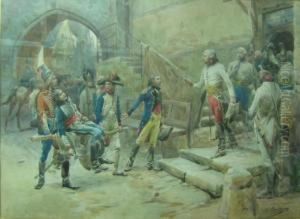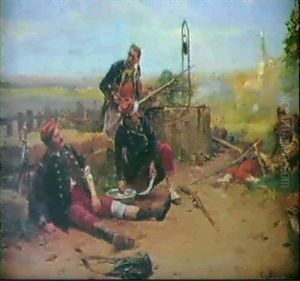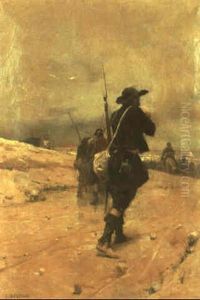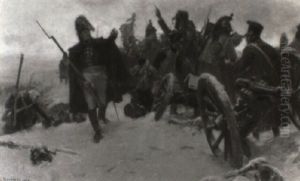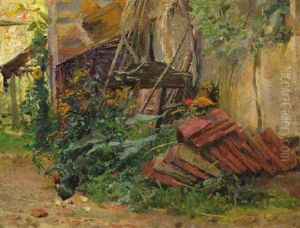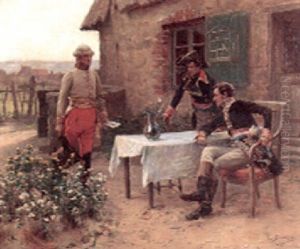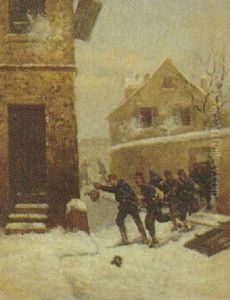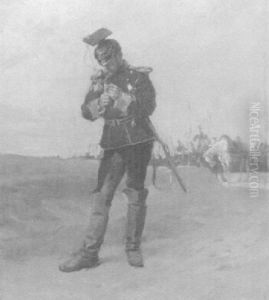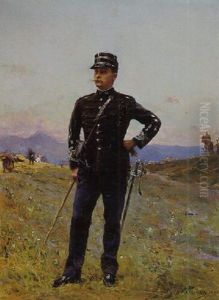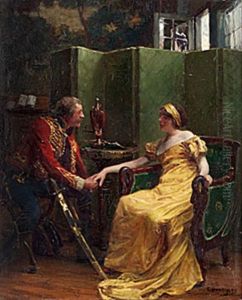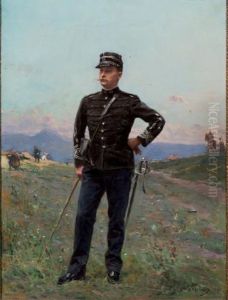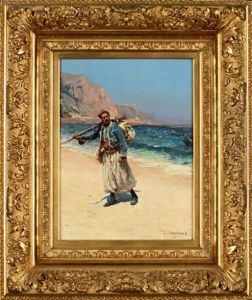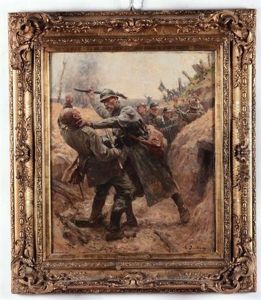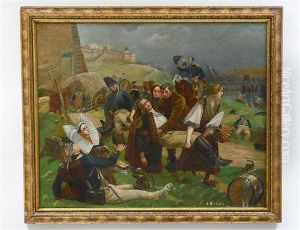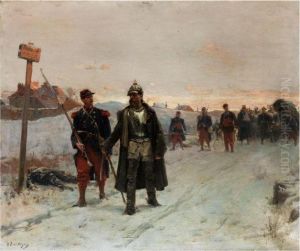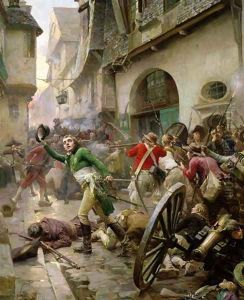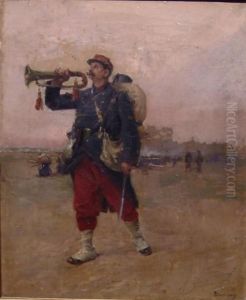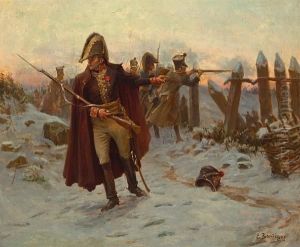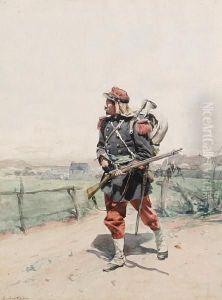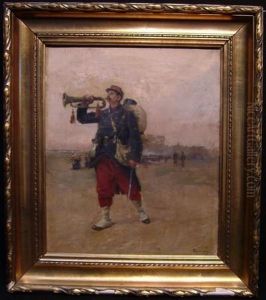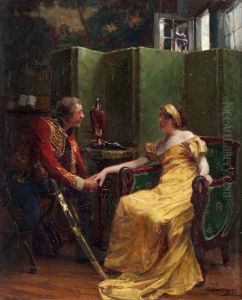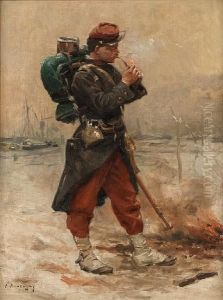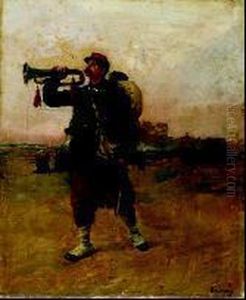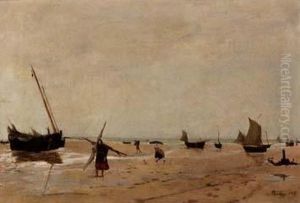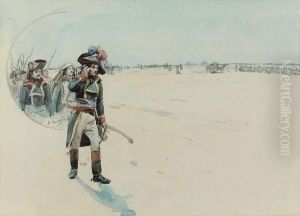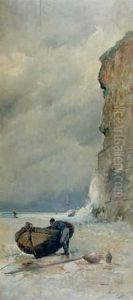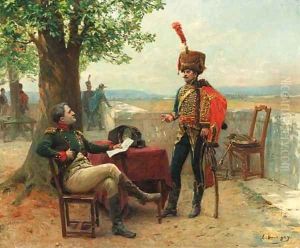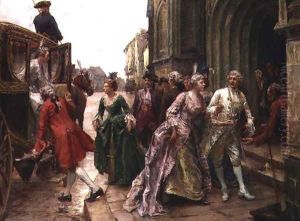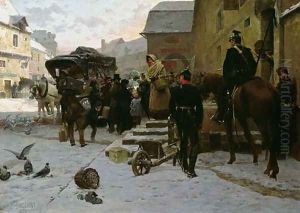Paul Emile Boutigny Paintings
Paul Emile Boutigny was a French painter, born in 1853 in Ecouen, a small village near Paris, France. The village of Ecouen was known as an artists' colony in the 19th century, which significantly influenced Boutigny's early exposure to art and painting. He is best known for his involvement in naval and military subjects, as well as historical scenes, which he depicted with great detail and accuracy.
Boutigny studied under the guidance of renowned artists such as Jean-Léon Gérôme, one of the most famous academic painters of his time. This education grounded him in the techniques of fine detail and historical accuracy that would become hallmarks of his work. Despite this traditional education, Boutigny managed to infuse his paintings with a sense of dynamism and life that was often commented upon by his contemporaries.
Throughout his career, Boutigny participated in numerous exhibitions, most notably the Paris Salon, where he regularly exhibited his works from the 1870s onwards. His paintings were well received, earning him accolades and medals, including recognition at the Exposition Universelle, the World's Fair held in Paris in 1889 and 1900.
Boutigny's works are characterized by their meticulous attention to detail, vibrant color palette, and the ability to convey the intensity of battle and the quiet moments of daily life with equal skill. He was particularly adept at capturing the interplay of light on water, making his naval scenes particularly compelling.
Despite his success, Paul Emile Boutigny remained deeply connected to his roots in Ecouen, often depicting scenes and people from his hometown. His legacy lives on through his contributions to French art, especially in the genre of military and naval painting. Paul Emile Boutigny passed away in 1929, leaving behind a body of work that continues to be celebrated for its historical value and artistic merit.
